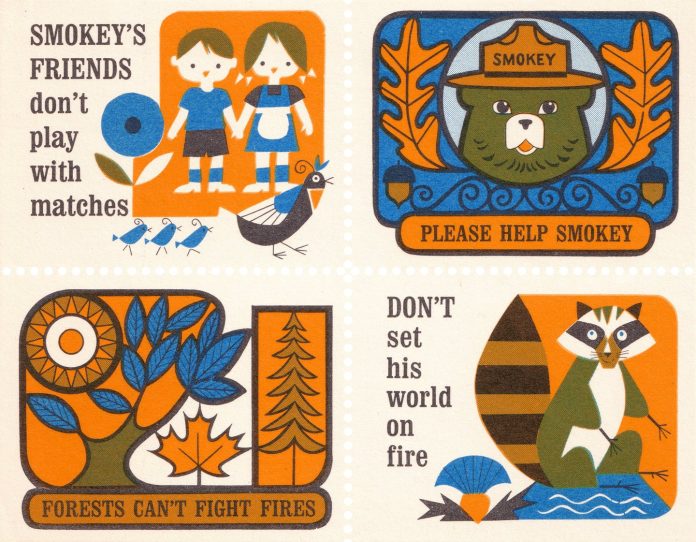For Zara, collecting ephemera from this wave of illustration has revealed the multiplicity of ways that the era left its mark on the contemporary scene. “So much of the work from this era is playful, stylish and full of personality. Despite printing constraints, artists still found ways to create illustrations full of wit and charm,” says Zara. “The cheerful optimism and embrace of character, combined with individuality and modernist values, led to impactful, vibrant designs that still resonate today.” According to the illustrator, its influence may be much more far reaching than we think: “Even illustrators who’ve never seen these originals are working in traditions these artists established.”
The move beyond conservative pre-war styles into more creative autonomy has had a residual effect on the stylistic choices in branding and marketing today: limited palettes, brand mascots, playful abstraction and the creation of anthropomorphic objects or shapes. “You see these approaches now on packaging, in advertising, on apps and in editorial work,” Zara shares. Despite its lasting impact, much of the illustrated work from the period has largely been overlooked, and with it, the illustrators that defined modern styles. “Cultural histories tend to focus on graphic design or poster art, which only tell part of the story,” Zara adds.
Collating the archive over all these years has led to more of a personal mission for Zara to spotlight these illustrators’ work and rebalance the history of our visual culture. Hours spent trawling eBay and flea markets for old cards, beer mats and booklets have all equated to an extensive open source educational resource for illustrators and designers alike to look back on. And now, Zara’s built a website to house it all and designed a database that will be searchable and usable by students and universities.
The illustrator is also looking to publish a book in the near future which focuses on character illustration from the archive, a study of “the emergence of personality during this era”, she says, “through stylised figures and distinctive approaches”. With each new brand of the project, Zara’s aim is adding to the archive and evolving a collection that helps us, she concludes, “connect the past with how we understand illustration today”.







